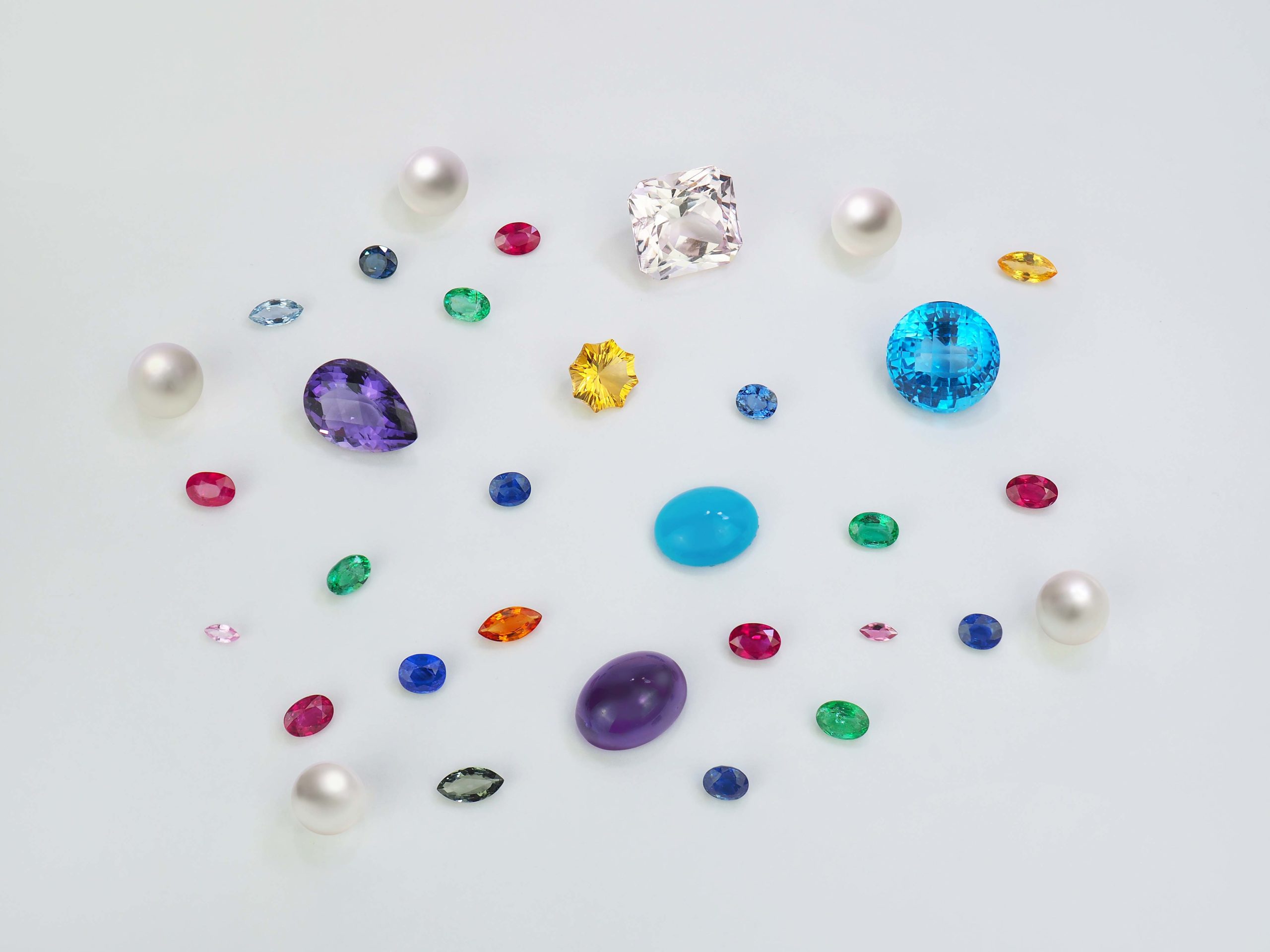gemstones associated with a person’s birth date.
A birthstone is a gemstone that represents a person’s period of birth that is usually the month or zodiac sign. Birthstones are often worn as jewelry or as a pendant necklace.
January – Garnet
Color: Mostly red or deep red. Rarer varieties can be lighter red and nearly any other color.
Crystallography: Isometric. Trapezohedron and dodecahedron forms are common. Cube and octahedron forms extremely rare.
Hardness: 6.5-7.5
February – Amethyst
Color: Pale lilac to deep reddish purple. May have color zoning.
Crystallography: Hexagonal.
Hardness: 7
March – Aquamarine
Color: Blue to blue-green.
Crystallography: Hexagonal
Hardness: 7.5-8
April – Diamond
Color: Colorless, gray, shades of yellow, brown, pink, green, orange, lavender, blue, black; rarely red.
Crystallography: Isometric; Crystals sometimes sharp octahedra, dodecahedra, and combinations with other forms.
Hardness: 10
May – Emerald
Color: Deep to medium green, blueish green.
Crystallography: Hexagonal
Hardness: 7.5-8
June – Pearl
Color: Pearl color is the result of a body color and an overtone color or orient present as a lustrous sheen. The orient is the color seen as reflected by a diffuse light source. The rest of the color is due to the body color.
Crystallography: Amorphous. The aragonite in the nacre of a pearl is orthorhombic, with minute crystals radially oriented and a concentric structure.
Hardness: 2.5-4.5
July – Ruby
Color: All varieties of red, from pinkish, purplish, orangey, brownish, to dark red.
Crystallography: Hexagonal.
Hardness: 9
August – Peridot
Color: All varieties of green.
Crystallography: Orthorhombic. Crystals rare, usually striated prisms, corroded grains; often as rolled pebbles, or in nodules called bombs in volcanic areas.
Hardness: 6.5-7
September – Sapphire
Color: Colorless, white, gray, blue, blue-green, green, violet, purple, orange, yellow, yellow-green, brown, golden amber, peachy pink, pink, black. May show color zoning.
Crystallography: Hexagonal (trigonal). Crystals common, often barrel-shaped, prisms with flat ends, sometimes bipyramidal; also massive, granular, in rolled pebbles.
Hardness: 9
October – Opal
Color: Colorless, white, yellow, orange, and red (various shades), yellowish brown, greenish, blue, gray, black, violet.
Crystallography: Amorphous. Recent work shows that opal is composed of an aggregate of tiny spherical particles, that is, a solidified gel; often forms concretions; botryoidal; reniform; stalactitic.
Hardness: 5.5-6.5
November – Citrine
Color: Yellow to red-orange, also deep orange and orangey brown.
Crystallography: Hexagonal
Hardness: 7
December – Blue Zircon
Color: Reddish brown, yellow, gray, green, red; various other colors (including blue) induced by heating.
Crystallography: Tetragonal. Crystals prismatic, pyramidal; often twinned; rounded pebbles.
Hardness: 6-7.5
